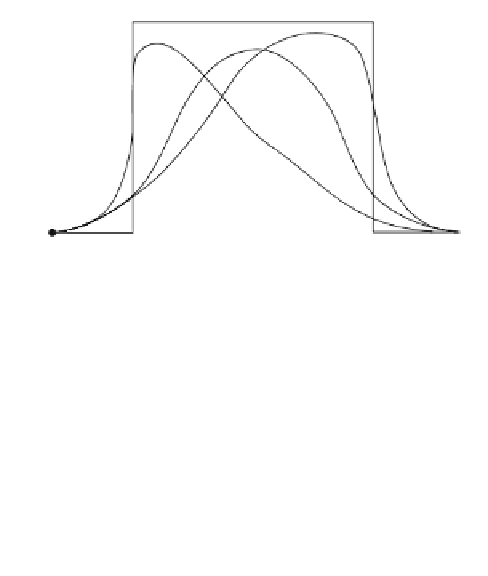Graphics Reference
In-Depth Information
Figure 11.30.
The geometric interpreta-
tion of rational B-spline
weights.
p
2
p
3
q
3
r
q
p
0
p
1
p
4
p
5
where the weight sequence (w
1
,w
2
,...,w
9
) is (1,1,2,1,1,1,2,1,1) and the knot vector is
(0,0,0,1,1,2,2,3,3, 4,4,4). The points
p
i
are shown in Figure 11.29(b).
Although Example 11.5.3.1 found a NURBS representation for the unit circle, it
is not a good one because it does not distribute points uniformly along the circle. The
problem is with the rational function parameterization that we used as a starting
point. [Till83] shows how one can get a better parameterization by a rational trans-
formation of the form
at
+
+
b
u
=
.
ct
b
Next, there is a geometric interpretation of the weights. To emphasize the depend-
ence of the function p(u) defined by equation (11.103) on its weights we shall include
a reference to the weights in the parameters of the functions below along with any
values that may have been assigned to them. See Figure 11.30, where
(
)
(
)
(
)
q
=
p u w
;
=
0
,
r
=
p u w
;
=
1
,
and
q
=
p u w
;
π
0
or
1
.
i
i
i
i
If
(
)
()
a
=
R
u w
;
=
1
and
b
=
R
u
,
i
i
i
where the R
i
are the rational basis functions of p(u), then one can show that
(
)
r
=-
1
1
aa
bb
q
+
p
,
.
and
i
(
)
q
=-
q
+
p
i
i
It follows that
pr
qr
pq
qq
1
-
a
1
-
b
i
i
i
i
w
i
=
=
.
a
b
In other words, the weight w
i
is just the cross-ratio of the four points
p
i
,
q
,
r
, and
q
i
.
The following geometric facts can be proved:















